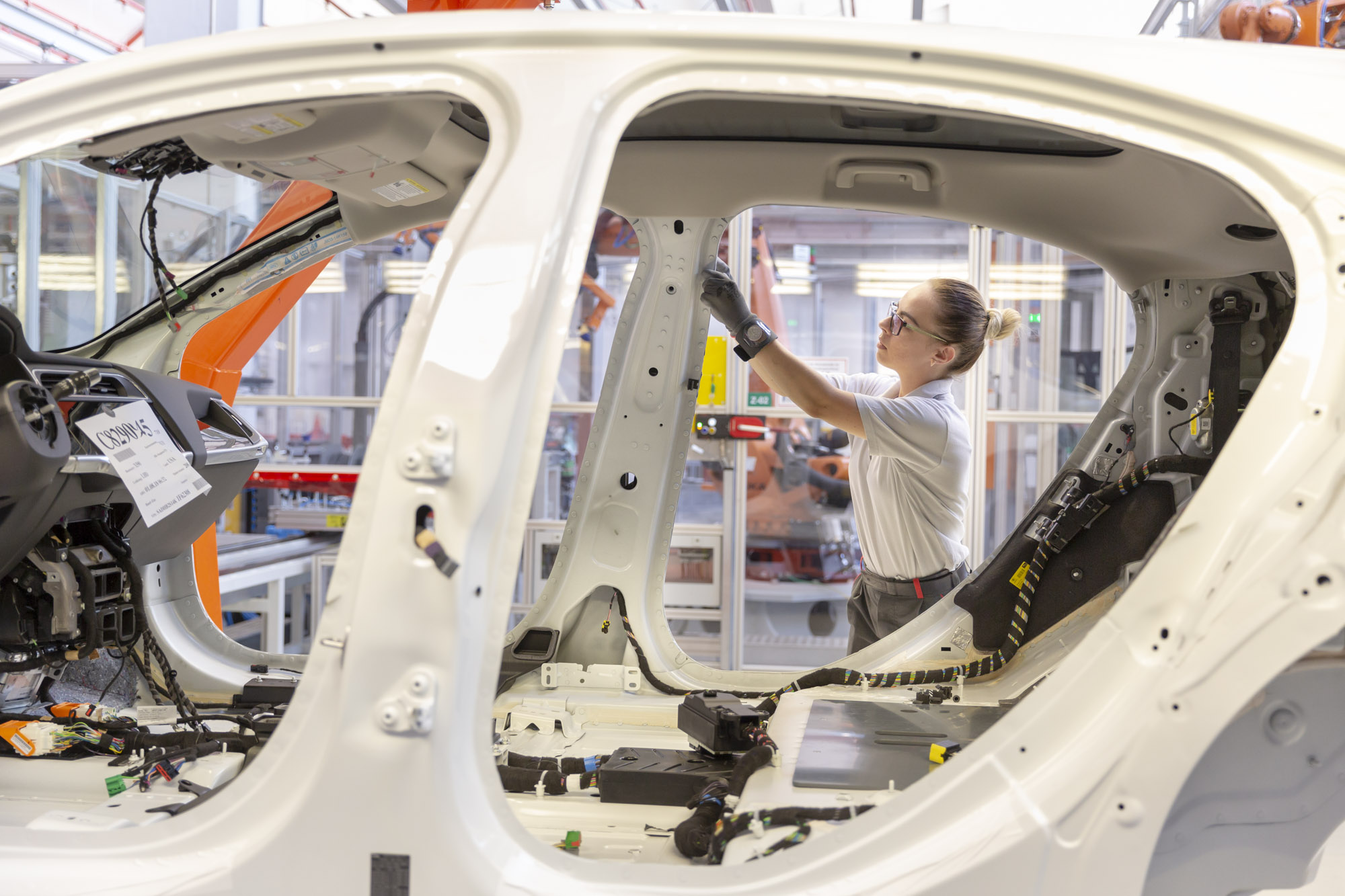
Why You Need a Vehicle Platform Strategy Right From the Start + Free Whitepaper
- Peter Tripp
- June 30, 2022
- 4-min read
Today’s automotive industry would not function without vehicle platforms. The rise of EVs and other technologies, the ever-growing number of software features, and the need for OEMs and new entrants to create distinct vehicles demand more and more resources, efficiency, and innovation.
A smart platform strategy is essential for present and future vehicle developers and manufacturers to keep up with the demands of the automotive industry.
But what exactly is a “smart” platform strategy? This article will answer the question in three steps.
First, we will outline the basics of every vehicle platform strategy: What information is required to create an automotive platform strategy and how exactly should it be used to conceive a sensible strategy?
Second, we will look at some pitfalls and misconceptions commonly associated with platform strategies.
And lastly, we will showcase a few important principles a successful vehicle platform strategy should adhere to.
Keep in mind that this article can only provide a general outline of all the processes and stages that make up a complete vehicle concept. Feel free to dive into our other Magna Insights articles if you’re eager to learn more. And if you want to discuss the realization of your own automotive vision in detail, feel free to contact us.
WHY A VEHICLE PLATFORM STRATEGY IS NEEDED
A vehicle can be divided in two parts: the “platform” and the “top hat.” “Platform” in this sense describes the part of a vehicle that is repurposed in future vehicle models and variants later on. This term is related to (mainly) non-styling specific parts, functions, components, systems, and sub-assemblies with maximum commonality. “Top hat” refers to styling and brand-specific parts.1
As such, it encompasses all unique components and systems customized for each brand. This simplified distinction is important because a platform strategy revolves around the question where to draw the line between common parts – or carry-over parts – and unique parts.
This is defined in the common parts strategy, which describes the adoption of components and parts in multiple vehicle platforms. It allows a vehicle project to grow from simply developing one vehicle to developing multiple models based on one platform.
This helps to enable a vehicle manufacturer to release new vehicles on the market with reduced costs and optimized time-to-market for each model for several years. However, this can require an increased effort in planning and developing the initial vehicle project.
All relevant specifications must be outlined at the beginning of each project. Any adjustments necessary to each model must be considered to ensure a common parts strategy. Therefore a vehicle platform strategy requires clear definition of the scope of adaptations or range of possible vehicle models. Whether the platform can be adapted from a C-segment to a D-segment, whether it’s releasable in both the U.S. and European (including the U.K.) markets, or what range of batteries it could use – all of this is evaluated and validated within the vehicle platform strategy.
THE PATH TO YOUR VEHICLE PLATFORM STRATEGY
1. Outline the complete vehicle
It requires a clear picture of the corresponding complete vehicle to draw up the dimensions of a platform. The most important cornerstones include:
- The core features of the vehicle. These features are likely to be shared by all vehicle models – so choosing the core features also means outlining the systems and components that will make up the vehicle platform later on.
- The number of vehicle variants planned for release. This number not only determines the number of variations down the road, but also indicates how long the platform should last on the market.
- The segment(s) the vehicle intends to cover (aka its structure) and subsequently its pricing. This factor provides a baseline for the degree of modularity required by the platform.
These cornerstones are all derived from the business case. Creating an initial customer market profile (CMP) is the most important thing when defining vehicle targets. The CMP answers the previous considerations and shows what exactly a vehicle is supposed to accomplish and which market it is meant for. This information is needed for creating the initial “framework” for the vehicle.
2. Arrange all vehicle features and targets
There are two intertwining properties that need to be defined when outlining the complete vehicle: targets and features.
Targets (specifically, complete vehicle targets) encompass all the metrics and functional requirements a vehicle needs to achieve – those that are empirically measurable or evaluable by subjective perception. These could be a five-star safety rating, a maximum driving range of 700km, or more subjective targets in terms of driving comfort.
Features, on the other hand, encompass all requirements set by the customer market. Those could be blind-spot and backup cameras, integrated connectivity/infotainment functions, or a sliding roof. In essence, features encompass everything the final vehicle should have equipped.
These two properties are summarized in the complete vehicle target catalogue and the feature list. Those two documents subsequently make up the core elements of the vehicle’s functional strategy. Within a function strategy, all mechatronic (E/E-related) and mechanic (system-related) functions of the vehicle are determined based on the possible range of variants required by the CMP. For example, if a vehicle is not intended for release in the U.K. or Japan, a right-side drive is not needed.
3. Define your core vehicle and its variations
There is still one factor to consider once all features have been defined. Although platform and top hat are considered two separate entities, their individual components overlap too much to be completely separated later on during development. With this in mind, the project needs to decide on one core vehicle. This vehicle will be the centerpiece of development and all subsequent variations are derived from it. The core vehicle will be the first vehicle developed, produced, and launched. It therefore sets the standard for how the platform (and the vehicle series as a whole) is perceived.
4. Find a suitable base platform, if available
The last step in finalizing the vehicle platform strategy is finding a suitable platform. For new entrants, sharing a platform with another OEM can be a good method of reducing initial costs and time-to-market. With the core vehicle set up, the range of variations clear, and supplier requirements and BOM worked out, they can scour the market for any existing platform that meets their requirements.
Modularity is one additional thing to note about shared platforms. Modern vehicle platforms have a far greater degree of adaptability than just a few decades ago. This means that they can be adapted to a much wider range of deviations. Thus, vehicle platforms don’t limit a vehicle manufacturer’s creativity. Instead, they allow them to focus on the features that make a vehicle unique by providing a technical basis on which those features can shine. Besides, a platform mainly consists of the “invisible” parts of a vehicle.
Traditional OEMs utilize platform sharing as well, although in a somewhat different manner than new entrants. They can either select an existing platform from their portfolio, design a new in-house platform based on their previous vehicles, or in some cases also share a platform with another OEM.
The bottom line is that platform sharing is a common way to bring a vehicle on the market as efficiently as possible. Developing a new platform is more expensive – but also enables more innovation.
COMMON PITFALLS WHILE DEVELOPING YOUR PLATFORM STRATEGY
New players in the automotive industry sometimes underestimate how early they need to initiate contact with component and system suppliers. Long lead times are a big hurdle in a market that’s all about flexible development schemes and fast time-to-market requirements. Taking care of such parts too late or making mistakes can greatly hamper the process of not only the vehicle platform strategy, but also the entire project. Therefore, identifying long-lead parts early and quickly acquiring the necessary suppliers should be on the top of every new entrant’s to-do list.
The same holds true for core suppliers. Some systems may not have long lead times, yet they are vitally important for the further planning, development, and testing of the vehicle’s other systems. Much like long-lead parts suppliers, the suppliers of these core parts and/or systems must also be identified and onboarded as soon as possible.
Finally, there is the chance that sometimes vital steps of the concept phase may be overlooked. A vehicle project must have a clear strategy that leaves no room for interpretation and adaptation at the end of the concept phase, because anything changed or missed after this will have severe consequences on the project and its schedule. Therefore, the concept phase is the most important phase of a vehicle project.
A FEW PRINCIPLES EVERY PLATFORM STRATEGY SHOULD ADHERE TO
There are a few things to consider when laying out the basis for a platform strategy:
Make sure your project's foundation is stable
By far the most important assurance for working out a sound platform strategy (and really a sound project schedule in general) is to ensure that its foundation is flawless. This means that the complete vehicle concept must be treated with utmost accuracy starting with the business case. A clear product vision and a clear customer market profile must be in place, with both comprehensive and comprehensible concepts derived from them. A complete vehicle requires clear targets – and those in turn need thorough groundwork.
Always keep an eye on your future production scope
The platform strategy is a tool to reduce initial costs and to lay out a long-term roadmap for a vehicle portfolio. It gives vehicle developers the opportunity to release several derivatives on a common technical basis and scale production volumes. Thus, the subsequent vehicle models benefit from scalability effects, standardized production processes, and a proven supplier network.
Look out for a partner who fits your needs
Vehicle development requires tremendous amounts of resources, time, skills, and workforce from the very start – which, particularly for new entrants, often poses the largest barrier before the project even leaves the ground.
Teaming up with a development and production partner allows new entrants to gain considerable footing before and during the complete vehicle project. Magna, for example, offers a complete one-stop-shop service, accompanying new players from conceptualization to serial production of their own vehicle. Of course, this also includes the search for and adaptation of a suitable base platform.
Stay connected with Inside Automotive!

Peter Tripp
Peter Tripp is Senior Acquisition Manager at Magna Steyr. After joining Magna in 2000, he held positions in sales, complete vehicle production, sales engineering, complete vehicle development acquisition, as well as overall complete vehicle responsibility for numerous complete vehicle projects.
We want to hear from you
Send us your questions, thoughts and inquiries or engage in the conversation on social media.
Related Stories

Flexibility is Key – Challenges and Solutions of Vehicle Assembling in a Multi-OEM-Production
Blog

Specific Know-How and Geo Skid: How a Multi-OEM Contract Manufacturer Ensures Peak Quality and Flexibility From Body-in-White Onward
Blog
Stay connected
You can stay connected with Magna News and Stories through email alerts sent to your inbox in real time.

